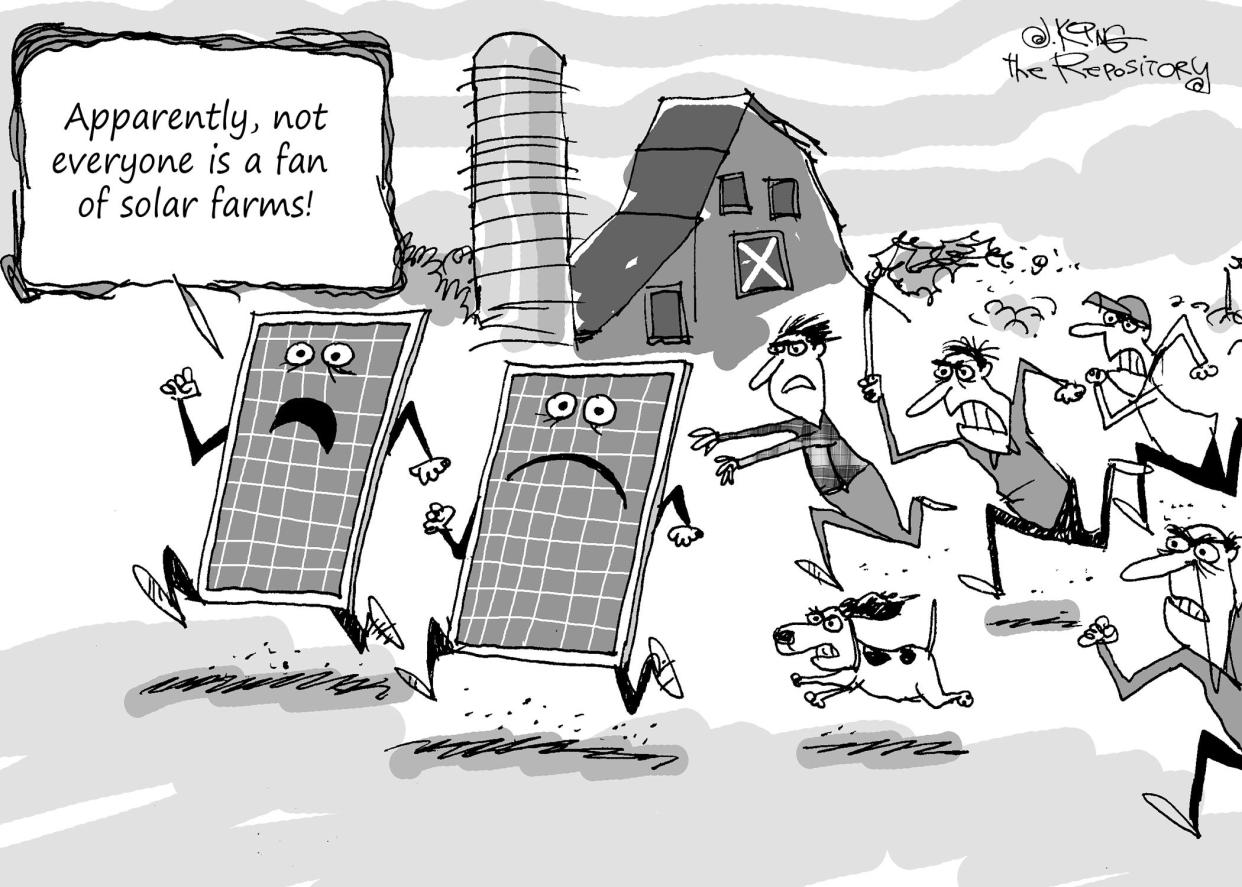Stark County townships say 'no' to solar and wind farms. Is it a fear of the unknown?

Stark County townships don't want large-scale solar and wind projects built in their communities.
County commissioners surveyed the 17 townships to find out if they were opposed to or favored such projects because, under Ohio Senate Bill 52, local governments have the power to veto projects over 50-megawatts. In the case of townships, the county government speaks for them.
The county commissioners may adopt a resolution designating all or part of unincorporated areas as a restricted area, prohibiting construction of the projects.
Stark townships had until Wednesday to respond to the county survey. Fourteen said no, while the other three didn't respond.
Who's opposed? Canton, Jackson, Lake, Lawrence, Lexington, Nimishillen, Osnaburg, Paris, Pike, Plain, Sugar Creek, Tuscarawas and Washington townships requested the commissioners vote to prohibit large solar facilities and large wind farms 50-megawatts or more, as well as economically significant wind farms between five and 50-megawatts.
Marlboro Township asked commissioners to prohibit large solar facilities and large wind farms but did not request action on economically significant wind farms.
The remaining three townships, Bethlehem, Perry and Sandy, have not taken any action.
Commissioners will now proceed with a required public hearing before passing a resolution disallowing them in those communities that don't want them.
Solar farms have become a hot topic in Stark because several projects are proposed, including a 150-megawatt solar farm in Washington Township. That project is planned by Stark Solar, a subsidiary of Samsung C&T. There also are smaller projects proposed in Bethlehem and Lawrence townships.
So what's the problem with solar and wind farms? Some people have voiced concerns over their appearance (as in they are ugly), potential noise, potential impact on property values and wildlife, and safety.
But we have to wonder if some of the opposition is merely a case of "not in my backyard" and just being afraid of the unknown. A nationwide study released earlier this year by the Lawrence Berkeley National Laboratory found that neighbors living within 3 miles of existing large-scale solar projects generally had more positive than negative attitudes about solar farms.
But respondents were more likely to have positive attitudes toward smaller projects. Attitudes involving 100-plus megawatt projects were 12-to-1 negative.
In a good sign, 42% of respondents would support additional large-scale solar projects in their community, compared to 18% that would oppose them.
Repository staff writer Grace Springer stopped by two smaller solar farms built in 2020 and owned by the city of Wadsworth in Medina County to see how neighbors there feel.
Peggy Ewald, owner of White Timbers Winery, had no issues with her business being next door to a solar farm.
"We're happy having that nice neighbor," she said. "There could be far worse neighbors than that."
Of course, these solar farms also have the potential to displace agricultural farms, as Reuters pointed out in a recent story.
We encourage the county commissioners — and anyone who's opposed or in favor — to talk with people who live and work near such facilities now to gauge whether they really are bad for a community.
This article originally appeared on The Repository: Stark County townships say 'no' to solar and wind farms. But why?
